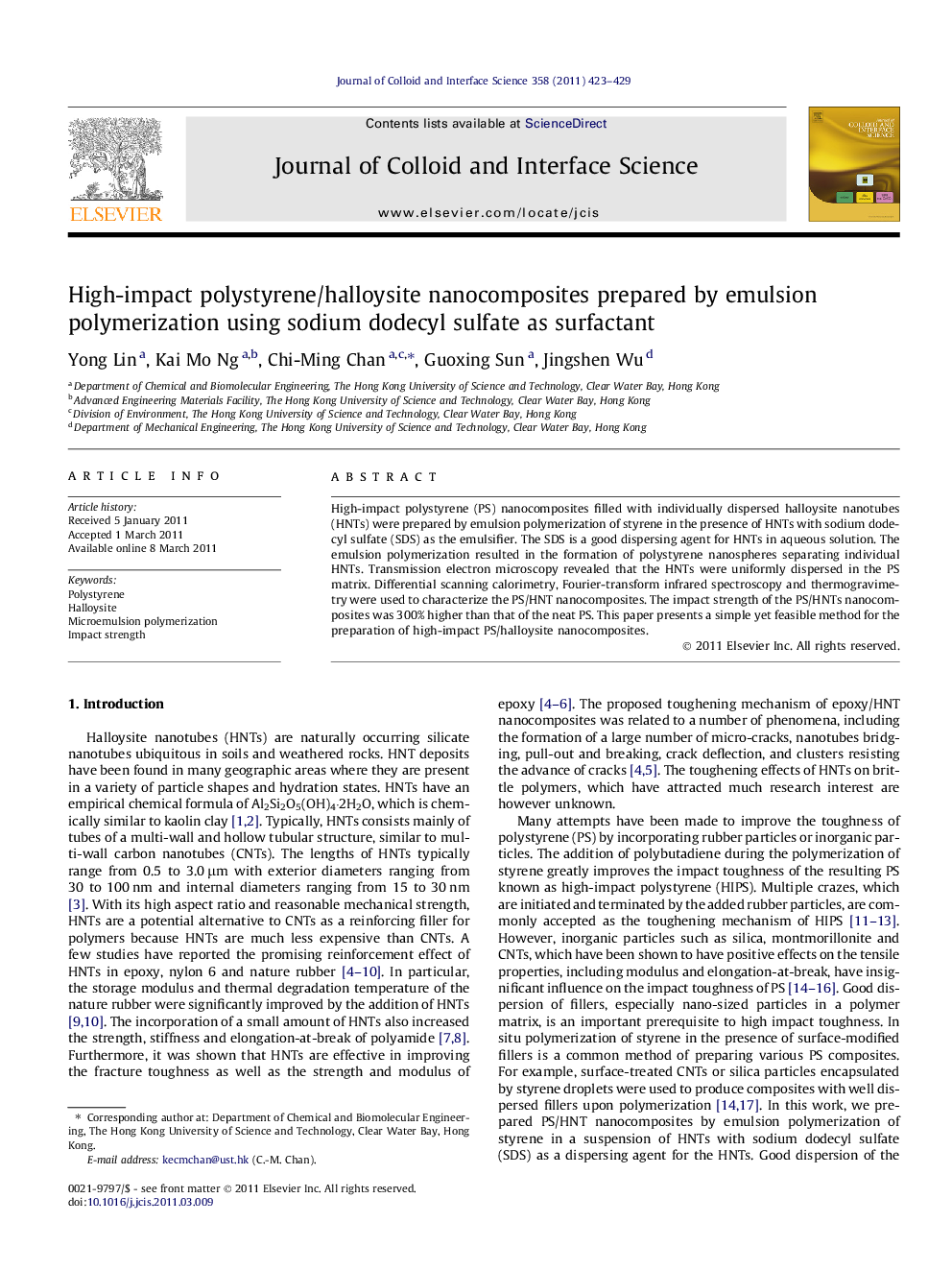| Article ID | Journal | Published Year | Pages | File Type |
|---|---|---|---|---|
| 608591 | Journal of Colloid and Interface Science | 2011 | 7 Pages |
High-impact polystyrene (PS) nanocomposites filled with individually dispersed halloysite nanotubes (HNTs) were prepared by emulsion polymerization of styrene in the presence of HNTs with sodium dodecyl sulfate (SDS) as the emulsifier. The SDS is a good dispersing agent for HNTs in aqueous solution. The emulsion polymerization resulted in the formation of polystyrene nanospheres separating individual HNTs. Transmission electron microscopy revealed that the HNTs were uniformly dispersed in the PS matrix. Differential scanning calorimetry, Fourier-transform infrared spectroscopy and thermogravimetry were used to characterize the PS/HNT nanocomposites. The impact strength of the PS/HNTs nanocomposites was 300% higher than that of the neat PS. This paper presents a simple yet feasible method for the preparation of high-impact PS/halloysite nanocomposites.
Graphical abstractHigh-impact polystyrene/halloysite nanocomposites prepared by in situ emulsion polymerization using sodium dodecyl sulfate as surfactant.Figure optionsDownload full-size imageDownload high-quality image (143 K)Download as PowerPoint slideHighlights► High-impact polystyrene (PS) nanocomposites filled with individually dispersed halloysite nanotubes (HNTs) were prepared by in situ emulsion polymerization of styrene. ► The emulsion polymerization resulted in the formation of polystyrene nanospheres separating individual HNTs. ► The impact strength of the PS/HNTs nanocomposites was 300% higher than that of the neat PS.
